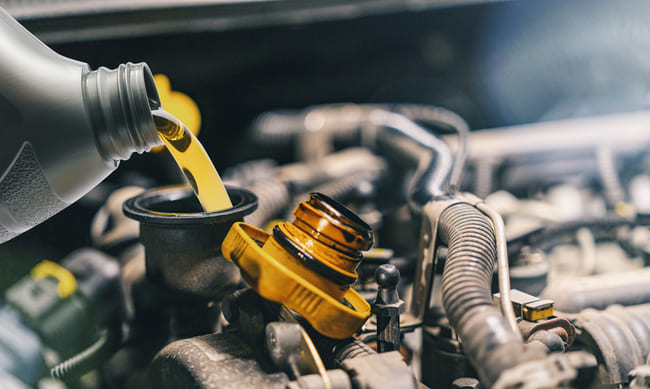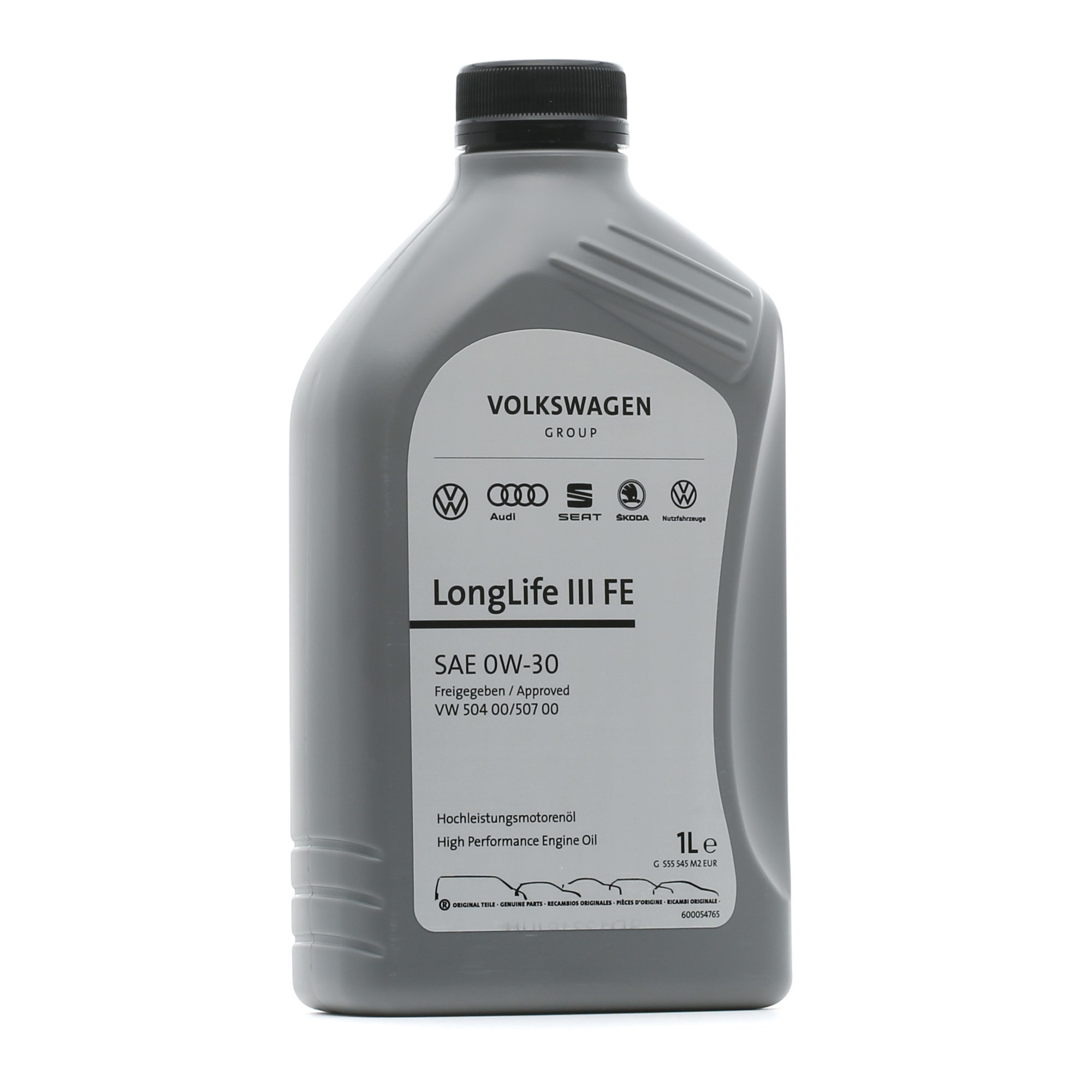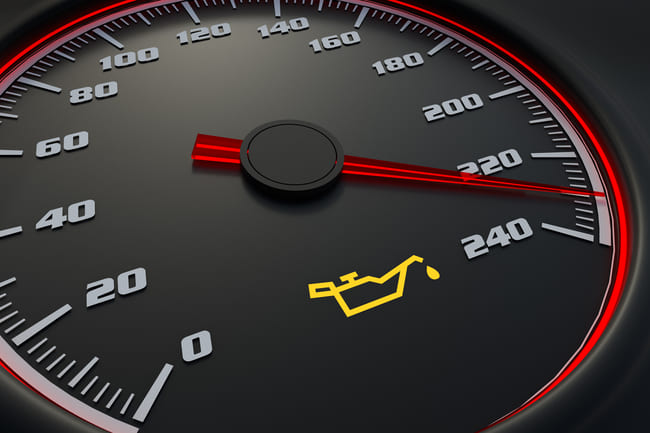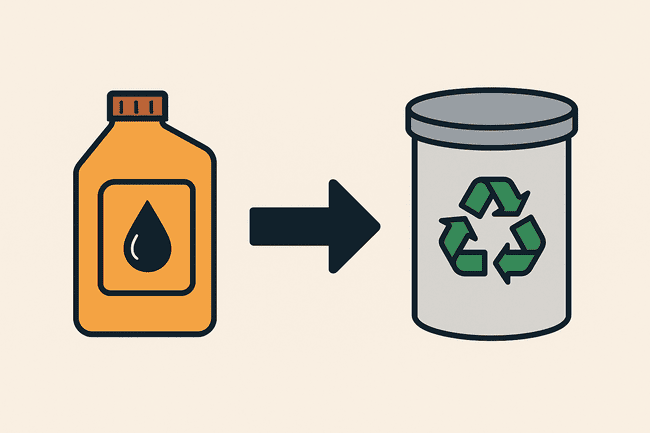Table of Contents
Oil Change – Intervals, Costs, and Useful Information
Forgetting to change or top up your oil is like forgetting to feed a hamster – it won’t end well. Engine oil ensures the motor works smoothly by lubricating the internal components and regulating engine temperature. However, over time, the oil is bound to deteriorate and sludge will build up, making a timely replacement essential for protecting your engine.
What does engine oil do?
Engine oil has two main functions: it reduces friction between the moving metal parts and helps dissipate heat from critical components like the pistons and valves. Modern oils include additives that enhance performance, prevent corrosion, and protect the engine against wear.
As the oil ages, it collects metal particles and combustion residues, gradually becoming less effective. Without regular changes, both the lubrication and cooling efficiency decline, potentially damaging your car engine parts and reducing overall vehicle performance.


When should you change your engine oil?
Most vehicles display a dashboard oil warning light, which often looks like a red oil can symbol, when oil levels or the condition of the lubricant becomes a concern. Some cars also have an “oil life” indicator that shows the remaining percentage of usable oil. Instead of waiting for a warning to appear, it’s best to stick to the manufacturer’s recommended oil change interval.
Consider changing your oil more frequently if:
- You mostly drive short distances or in congested city traffic
- Your vehicle has a turbocharged or high-performance engine
- You tow heavy loads or frequently drive in extreme temperatures
As a general guideline:
- Conventional oil may require changes every 5,000 miles or six months.
- Synthetic oil and semi-synthetic oil, such as SAE 5W 30 engine oil, typically lasts between 7,500 and 15,000 miles depending on your driving habits, vehicle model, and the brand’s formula.

 VAG Engine oil
0W-30, 1l
VAG Engine oil
0W-30, 1l



What does an oil change cost?
In the UK, the cost of an oil change typically ranges from £50 to £190. Factors that affect the price include:
- The type of oil used (synthetic is more expensive than mineral oil)
- Whether you go to a dealership or an independent garage, as well as the location
- Additional services like an oil filter replacement or brake checks
Some garages use “premium oils” that are significantly more expensive than regular car engine oil, but many affordable options also receive top performance ratings. You can reduce costs by purchasing your own oil and carrying out the oil change yourself (with the right tools and skill).

What happens during a professional oil change?
Here’s what you can expect:
- The vehicle is lifted and secured, and the old oil is drained from the sump.
- The oil filter and sealing rings are replaced.
- New oil is added to the engine.
- The oil change interval indicator is reset.
Most garages also offer to inspect your brakes or other components during the same visit, making it a convenient time for wider maintenance.
Why does engine oil turn black?
Oil darkens as it absorbs particles, dust, and fuel residues. It also becomes thicker, reducing its effectiveness. Degraded oil can no longer lubricate or cool the engine properly, which increases wear and fuel consumption.
Fresh oil is typically a translucent amber colour. To check the condition of your oil, use your car oil dipstick:
- Park on level ground and turn off the engine.
- Let the engine cool for around 5–10 minutes.
- Pull out the dipstick, wipe it clean with a cloth, then reinsert fully.
- Remove again and check the oil level: it should be between the min and max marks.
- Examine the oil’s colour and texture; clean oil is amber, not gritty or dark.
 LIQUI MOLY Engine oil
5W-30, 5l
LIQUI MOLY Engine oil
5W-30, 5l

 Valvoline Engine oil
5W-30, 4l
Valvoline Engine oil
5W-30, 4l


Responsible disposal of used oil
Used engine oil is classified as hazardous waste. To dispose of it responsibly:
- Collect it in a sealed container
- Bring it to a recycling facility or service station that accepts waste oil
Never pour used oil down the drain or into household waste, as this can cause serious environmental damage.


DIY oil change: avoid these common mistakes!
If you prefer to change the oil yourself, make sure to do the following:
- Use the correct oil type and quantity
- Replace the oil filter with each change
- Properly dispose of the used oil
- Avoid over- or under-tightening the drain plug
A useful video on this topic:
TOP 5 mistakes during DIY oil change
Final thoughts
An oil change might seem like a simple task, but it plays a critical role in maintaining your engine’s longevity. Whether you visit a garage or do it yourself, stick to your car's recommended oil change schedule and keep an eye on oil condition using your car oil dipstick. A little care goes a long way in keeping your vehicle in top shape.
Top products related to this topic:










